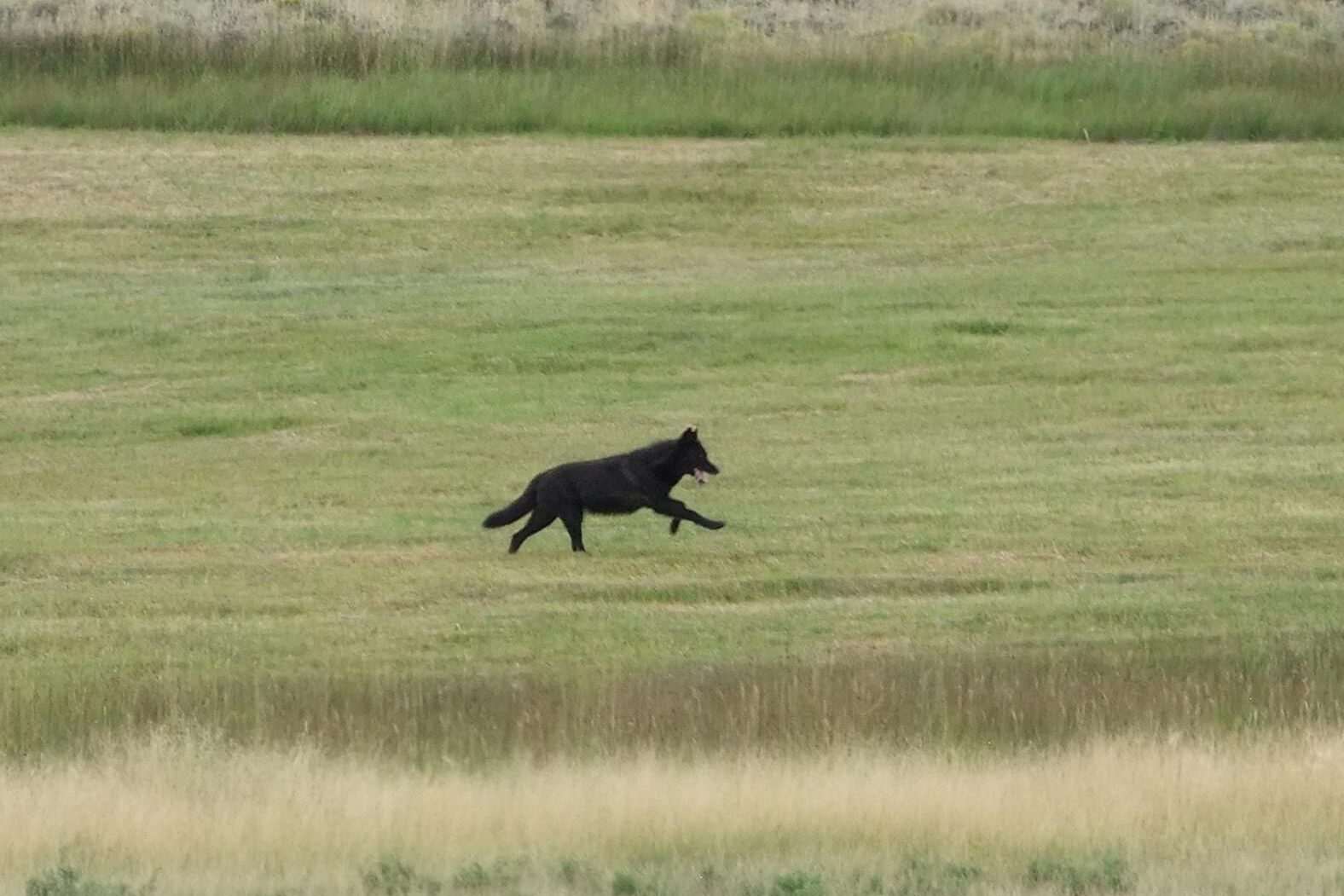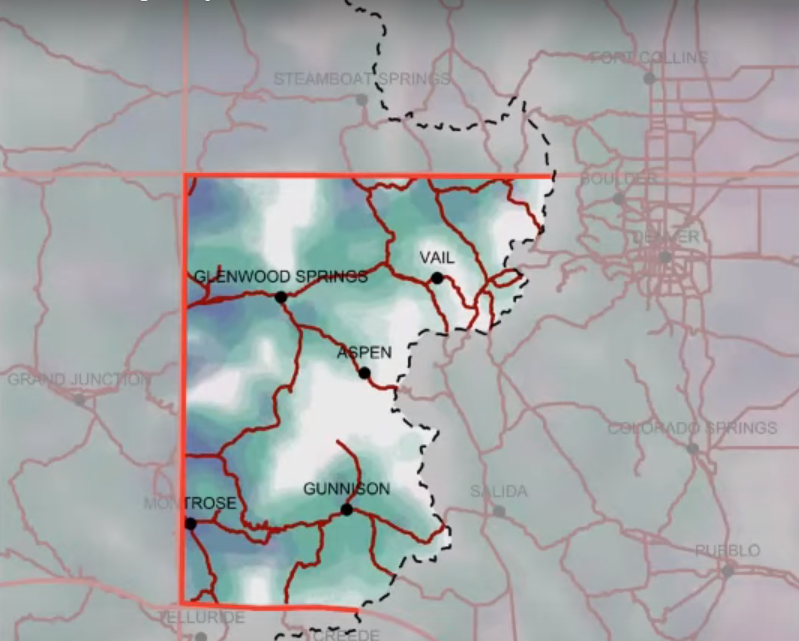
It's been almost two years since Colorado voters narrowly approved a ballot initiative to force the state to reintroduce gray wolves by the end of 2023.
The initiative specified wolf reintroduction must occur on Colorado's Western Slope. Otherwise, it doesn't say where the state should release the predators to kickstart the population.
But state biologists provided hints at a Colorado Parks and Wildlife Commission meeting on Friday. It now appears CPW will place wolves somewhere in a broad area containing some of the state’s most popular ski areas, including Aspen and Vail.
In an update on the wolf reintroduction planning process, Eric Odell, the species conservation program manager with Colorado Parks and Wildlife, cited a recent study assisting their efforts to select reintroduction locations.
The research takes a novel approach to guide policymakers. To suggest suitable places for wolves, it not only examines biological factors, like where the predators would find ample deer and elk populations. It also analyzes which local communities would tolerate wolves, partially based on how more than 3 million Coloradans voted on the reintroduction ballot initiative.
The results, published in the journal "Global Ecology and Conservation," found wolves could have the easiest time regaining a foothold in a portion of southwest Colorado.
In a presentation to wildlife commissioners, Odell showed a map overlaying the results of the study with an area he called the “donut hole” for wolf reintroduction. Its boundaries are 60 miles from Colorado’s borders with Wyoming, Utah and New Mexico, minimizing the risk of the animal immediately migrating into other states. The Continental Divide forms the eastern limit.

Odell said wildlife officials will release wolves into the region over the winter months, which stretches roughly between U.S. Route 24 and Montrose and runs between Glenwood Springs and Vail in the north and Ridgway in the south.
Odell told commissioners the zone included many strong wolf habitats with a lower risk of livestock conflicts. He expects Colorado Parks and Wildlife managers will now start talking to communities in the area — like Aspen, Gunnison and Glenwood Springs — about the potential impacts.
"We want to have the highest likelihood of success so that we're not dealing with depredations more than we would want to," Odell said.
Odell clarified the region is not the only place the state will tolerate wolves. After reintroduction, wildlife managers expect the predators to exit its boundaries and travel to other parts of the state.
Northern Colorado is one place wolves could seek out. Using biological factors alone, the study suggests the Western Slope north of Interstate 70 contains the state’s best wolf habitat due its to vast deer and elk populations. At the same time, researchers concluded the region had a higher potential for conflict between wolves and people. Most voters in the region voted decisively against wolf reintroduction.
The area has already attracted wolves from Wyoming. Colorado's single known pack got its start when a wolf migrated from outside Yellowstone National Park into Jackson County, Colo. The female has since found a mate and birthed a litter of puppies.
But Mark Ditmer, a research ecologist with the U.S. Forest Service and the lead author of the study, said the data show southwest Colorado is likely a more welcoming landscape. His research highlights the high-altitude mountains between Aspen and Durango as a zone with enough prey and higher levels of social acceptance.
"There are big wilderness areas around the ski towns that a provide a combination of low livestock and places that tended to support the ballot initiative," Ditmer said.
Since wolves are legendary travelers, Ditmer said his maps should be seen as a guide to maintaining a viable wolf population. Over the coming years, wildlife managers could use the research to help them identify potential conflict zones and safe migration corridors.
"I hope they're useful as a tool for thinking through where to release wolves, and where they might be problems as the population expands," Ditmer said.
Gray Wolves in Colorado
Wolves are finding their way back to Colorado after an 80-year absence. At the same time, state wildlife officers are carrying out a voter-approved initiative to reintroduce the predators by the end of 2023.
- A test of ‘ballot box biology’: Colorado’s 2020 reintroduction initiative marked the first time voters, not wildlife managers, ordered the return of an endangered species.
- Wolves have returned to Colorado without human help. One pack has migrated into Jackson County and started breeding. Another mysteriously disappeared in Moffat County.
- Are wolves even endangered? The predators remain protected under state law, but their status as a federal endangered species remains locked in complex court battles.
- Colorado ranchers are getting ready: Livestock producers are worried about losing animals. One has tried to protect his cattle with guard donkeys.









